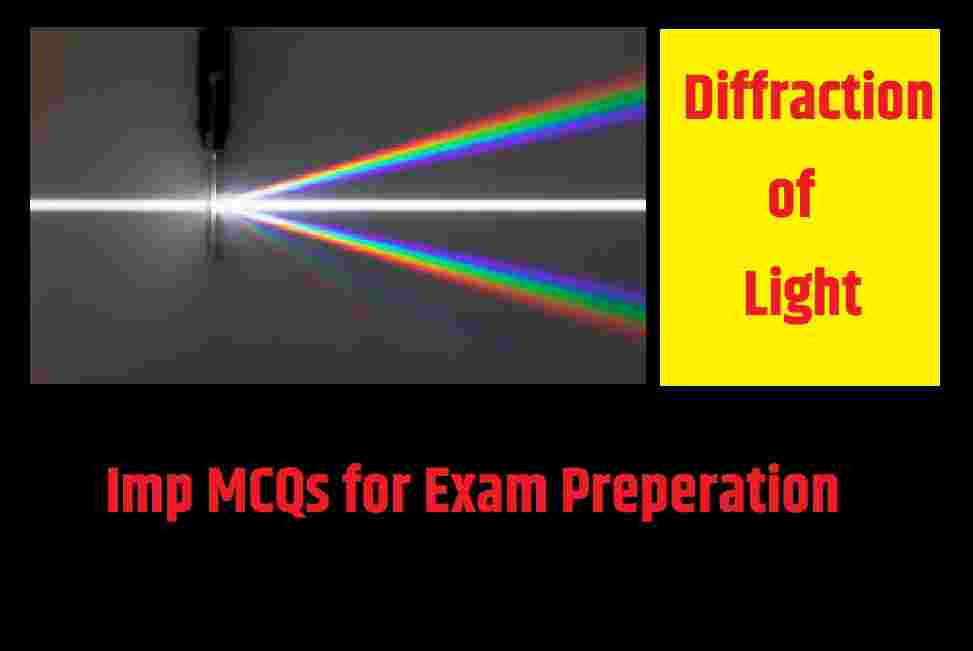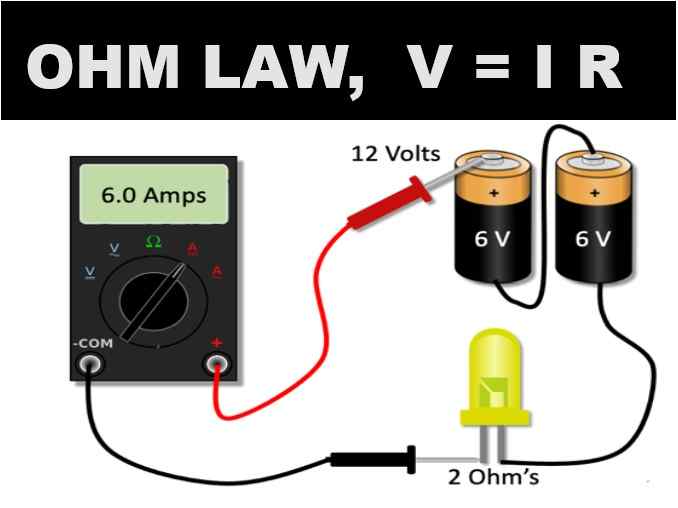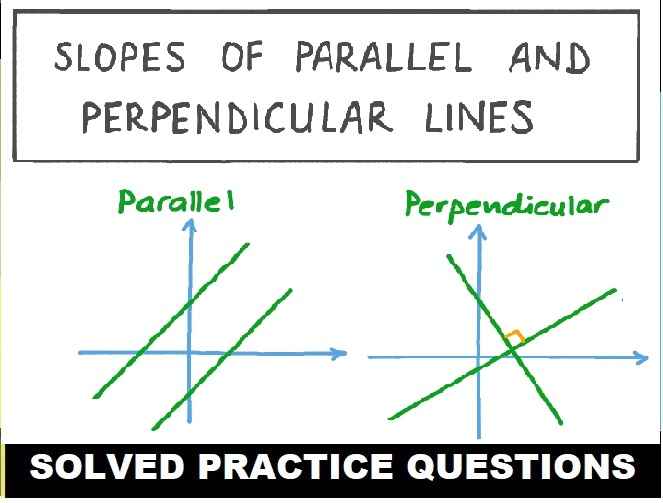Diffraction of Light MCQs Type Questions with Answer for ISC Class 12 . These MCQs / Objective Type Questions is based on latest reduced syllabus according 2021-22 session on bifurcated pattern. Main motto of MCQ Type Question is cracking the next upcoming Sem-2 exam of council. Visit official website CISCE for detail information about ISC Class-12 Physics.
ISC Class 12 Diffraction of Light MCQs Type Questions with Answer

| Board | ISC |
| Class | 12th (XII) |
| Subject | Physics |
| Chapter | Diffraction of Light |
| Syllabus | on bifurcated syllabus (after reduction) |
| Session | 2021-22 |
| Bifurcated | Sem-2 |
| Topic | MCQs / Objective Type Question |
Class 12 Physics Diffraction of Light MCQs ISC
Question 1. In a single slit difiraction pattern intensity and width of fringes are__________
(a) unequal width
(b) equal width
(c) equal width and equal intensity
(d) unequal width and unequal intensity
Answer: (d) unequal width and unequal intensity
Question 2. Which one of the following is most essential for observing diffraction of light___________
(a) monochromatic light
(b) white light
(c) a very narrow slit or obstacle
(d) two coherent sources
Answer: (c) a very narrow slit or obstacle
Question 3. If white light is used in diffraction due to a slit, the central maxima will be__________
(a) black
(b) white
(c) coloured
(d) red
Answer: (b) white
Question 4. A diffraction pattern is obtained using a beam of red light. What happens if red light is replaced by the blue light_________
(a) bands disappear
(b) diffraction bands become narrow and crowded together
(c) diffraction bands become broader and farther apart
(d) no change in diffraction pattern
Answer: (b) diffraction bands become narrow and crowded together
Question 5. A small circular disc is placed in the path of monochromatic light. The centre of the geometric shadow is always_______
(a) bright
(b) dark
(c) coloured
(d) half bright and half dark
Answer: (a) bright
Question 6. If a wavelength of a wave is large, then the degree of diffraction observed is__________
(a) Less
(b) More
(c) Zero
(d) Data insufficient
Answer: (b) More
Question 7. The angular width of the central maxima of a diffraction pattern due to a single slit does not depend upon the________
(a) distance between slit and source
(b) width of the slit
(c) wavelength of light used
(d) frequency of light used
Answer : (a) distance between slit and source
Question 8. The main difference in the phenomenon of interference and diffraction is that_________
(a) diffraction is due to interaction of light from different parts of same wavefront, whereas the interference is the interaction of two different waves derived from the same source.
(b) diffraction is due to interaction of light fromm the same wavefront whereas interference is the interaction of waves from two isolated sources
(c) diffraction is caused by reflected waves derived from the same source, whereas interference is the bending of light from the same wavefront
(d) diffraction and interference both are due to interaction of light from different parts of same wavefront
Answer: (a) diffraction is due to interaction of light from different parts of same wavefront, whereas the interference is the interaction of two different waves derived from the same source.
Question 9. The phenomenon of diffraction may be considered as interference, where the number of coherent sources are_______
(b) one
(a) zero
(c) less than 5
(d) infinite
Answer: (d) infinite
Question 10. The Fraunhoffer diffraction pattern of a single slit is observed with red light the source is then replaced with that of blue light. If the positions of the diffraction minima on the screen are to remain the same as before__________
(a) the slit width must be decreased
(b) the slit width must be increased
(c) the lens-screen combination must be moved away from the slit.
(d) the lens-source combination must be moved away from the slit
Answer: (a) the slit width must be decreased
Question 11. State the essential condition for diffraction of light to occur.
(a) The size of the aperture must be less when compared to the wavelength of light
(b) The size of the aperture must be more when compared to the wavelength of light
(c) The size of the aperture must be comparable to the wavelength of light
(d) The size of the aperture should not be compared to the wavelength of light
Answer: (c) The size of the aperture must be comparable to the wavelength of light
Question 12. What is the cause of diffraction?
(a) Interference of primary wavelets
(b) Interference of secondary wavelets
(c) Reflection of primary wavelets
(d) Reflection of secondary wavelets
Answer: (b) Interference of secondary wavelets
Question 13. What should be the order of the size of an obstacle or aperture for diffraction light?
(a) Order of wavelength of light
(b) Order of wavelength of obstacle
(c) Order in ranges of micrometer
(d) Order in ranges of nanometer
Answer: (a) Order of wavelength of light
Question 14. A corona around the moon is seen when we view it on a fogy or misty night. This is due to:(a) Diffraction patterns of air born water droplets
(b) Dispersion of light by air born water droplets
(c) Scattering of light by air born water droplets
(d) Formation of diffused image of moon
Answer: (a) Diffraction patterns of air born water droplets
Question 15. Diffraction is common in light waves.
(a) True
(b) False
Answer: (b) False
Question 16. Determine the half angular width of the central maximum, if a wavelength of 1000 nm is observed when diffraction occurs from a single slit of 2 μm width.
(a) 100o
(b) 30o
(c) 90o
(d) 150o
Answer: (b) 30o
Question 17. What will be the linear width of the central maximum on a screen that is kept 5 m away from the slit, if a light of wavelength 800 nm strikes a slit of 5 mm width.
(a) 1.2 mm
(b) 5.6 mm
(c) 6.5 mm
(d) 9.7 mm
Answer: (a) 1.2 mm
Question 18. A small circular disc is placed in the path of light from a distant source. Identify the nature of the fringe produced.
(a) Dual
(b) Narrow
(c) Dark
(d) Bright
Answer: (d) Bright
Question 19. Single slit diffraction is completely immersed in water without changing any other parameter. How is the width of the central maximum affected?
(a) Insignificant
(b) Increases
(c) Decreases
(d) Becomes zero
Answer: (c) Decreases
Question 20. Which one of the following sets of colour combinations are added in colour vision on TV?
(a) Yellow, green and blue
(b) White, black, red and green
(c) Red, green and blue
(d) Orange, pink and blue
Answer: (c) Red, green and blue
Question 21. Which of the following incident light wavefronts is most suitable for observing a single slit diffraction pattern?
(a) Either a cylindrical wavefront or a spherical wavefront
(b) Cylindrical wavefront only
(c) Plane wavefront only
(d) Spherical wavefront only
Answer: (c) Plane wavefront only
Question 22. The resolving power of a plane transmission diffraction grating will increase on increasing:
(a) the grating element only
(b) the order of the spectrum only
(c) the total number of rulings on the grating only
(d) both order of the spectrum and total number of rulings on the grating
Answer: (d) both order of the spectrum and total number of rulings on the grating
Question 23. When white light passes through prism, the colours which bends the least is –
(a) Indigo
(b) red
(c) orange
(d) violet
Answer: (b) red
Question 24. According to the modern theory of nature of light, the light has
(a) Wave nature only
(b) Particle nature only
(c) Both wave and particle (dual) nature
(d) Neither particle nor wave nature
Answer: (c) Both wave and particle (dual) nature
Question 25. The spacing of one set of crystal planes in Nacl is d = 0.282 nm. A monochromatic beam of X-Rays produces a Bragg’s maximum when glancing angle with these planes is 7°. Assuming this is the second order maximum. The wavelength of X-Rays used is (sin 7° = 0.122)
(a) 1.38 nm
(b) 0.034 nm
(c) 0.069 nm
(d) 2.07 nm
Answer: (b) 0.034 nm
Question 26. When light passes from air to water, the angle of refraction is:
(a) Less than the angle of incidence
(b) Greater than the angle of incidence
(c) Always equal to 90° with the surface of water
(d) Equal to the angle of incidence
Answer: (a) Less than the angle of incidence
Question 27. Thick lenses show chromatic aberration due to ________.
(a) total internal reflection
(b) reflection of light
(c) dispersion of light
(d) interference of light
Answer: (c) dispersion of light
Question 28. A diffraction pattern due to a single slit has been obtained using a beam of red light. On replacing the red light with violet light, then
(a) diffraction bands disappear
(b) diffraction bands become narrower and crowd together
(c) no change occurs in the diffraction pattern
(d) diffraction bands become broader
Answer: (b) diffraction bands become narrower and crowd together
Question 29. Maximum angle of diffraction in a plane transmission diffraction grating is:(a) 90°
(b) 45°
(c) 180°
(d) 135°
Answer: (a) 90°
Question 30. Diffraction was discovered by :
(a) Grimaldi
(b) Thomas Young
(c) Malus
(d) Huygens
Answer: (a) Grimaldi
Question 31. Light seems to turn around corners and enter regions where we would expect a shadow. These effects, known as _____________.
(a) interference
(b) diffraction
(c) polarisation
(d)refraction
Answer: (b) diffraction
Question 32. In an experiment of a single slit diffraction, the width of the slit is 1.2 μm and the angular width of central maxima is observed to be equal to π/6. Find the wavelength of light.
(a) 6 Å
(b) 60 Å
(c) 600 Å
(d) 6000 Å
Answer: (d) 6000 Å
Question 33. In a single slit diffraction pattern, the intensity of the principal maximum is I0. On doubling the slit width, its intensity will be:
(a) I0 / 2
(b) 4 I0
(c) I0
(d) 2 I0
Answer: (c) I0
Question 34. In the diffraction through single slit first minima of wavelength λ1 and third maxima of wavelength λ2 are coincident. Then
(a) 3λ1 = 0.3λ2
(b) 3λ1 = λ2
(c) λ1 = 3.5λ2
(d) 0.3λ1 = 3λ2
Answer: (c) λ1 = 3.5λ2
Question 35. What happens to the angular width of central fringe of a single slit diffraction if the slit width is doubled?
(a) Angular width becomes two times
(b) Angular width becomes halved
(c) Angular width remains same
(d) Angular width becomes four times
Answer: (b) Angular width becomes halved
Question 36. The reflecting plane of lithium fluoride (Lif) analyzing crystal has an interplanar distance of 4 Ȧ. Calculate the wavelength of 2nd order differential line which has a glancing angle of 30°.
(a) 1 Ȧ
(b) 2 Ȧ
(c) 3 Ȧ
(d) 4 Ȧ
Answer: (b) 2 Ȧ
Question 37. In the X-ray diffraction of a set of crystal planes having d equal to 0.18 nm, first order reflection is found to be at an angle of 22°. The wavelength of X-rays is: (sin 22° = 0.374, cos 22° = 0.927)
(a) 0.0745 nm
(b) 0.0137 nm
(c) 0.745 nm
(d) 0.135 nm
Answer: (d) 0.135 nm
–: End of Diffraction of Light MCQs :–
-: also visit :-
- ISC Sem-2 Question Bank Class-12
- Sem-2 ISC Specimen Paper for Class-12
- ISC Class-12 Textbook Solutions ,Syllabus, Solved Paper
- Previous Year Question Paper for ISC Class-12
Please share with your ISC friends if it is helpful
Thanks


